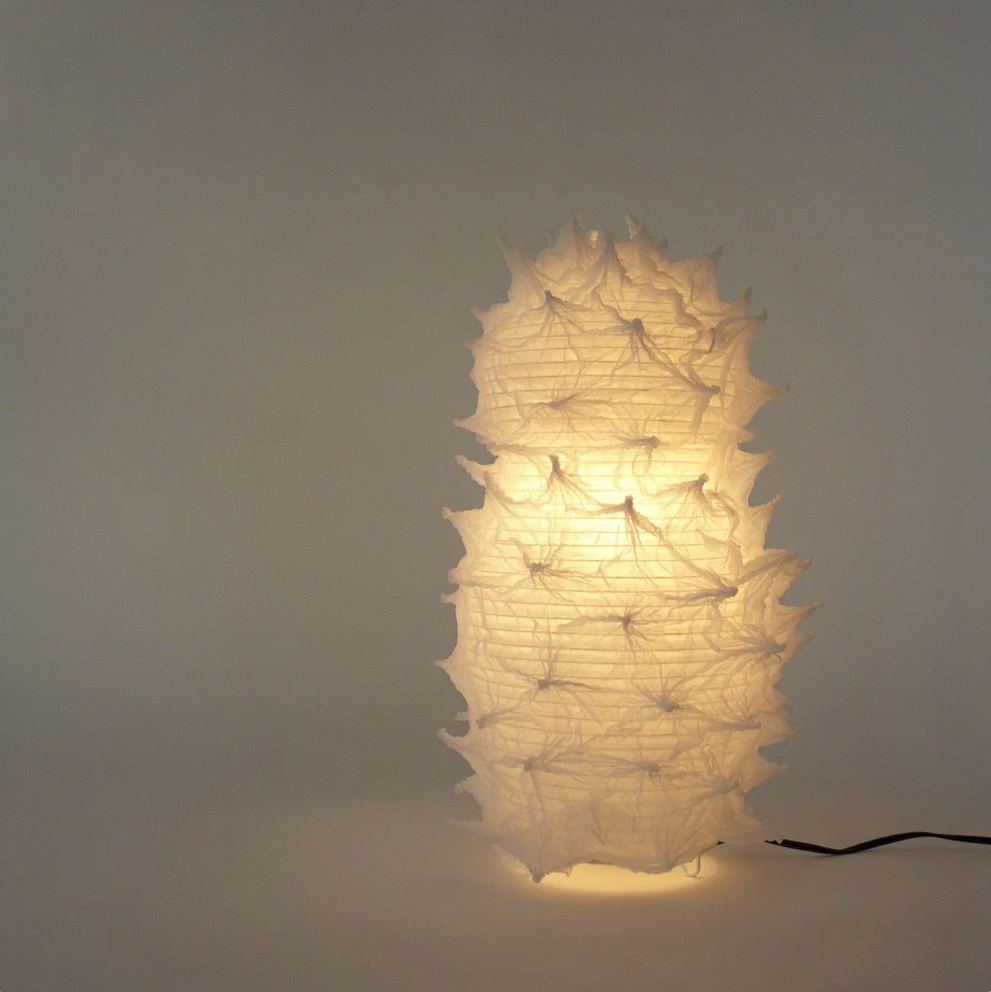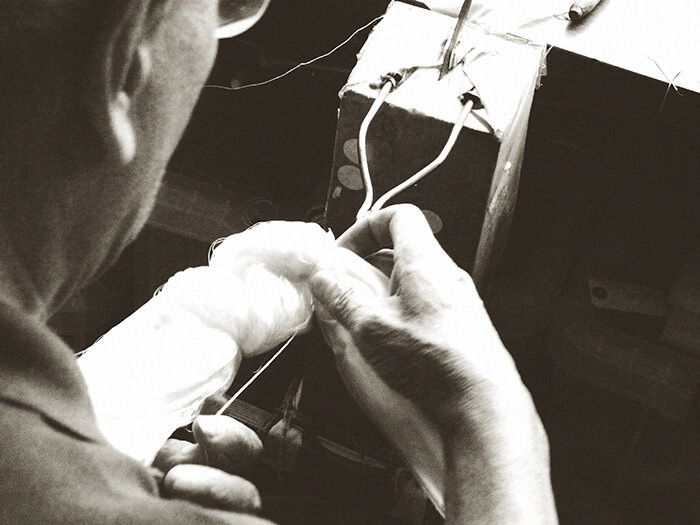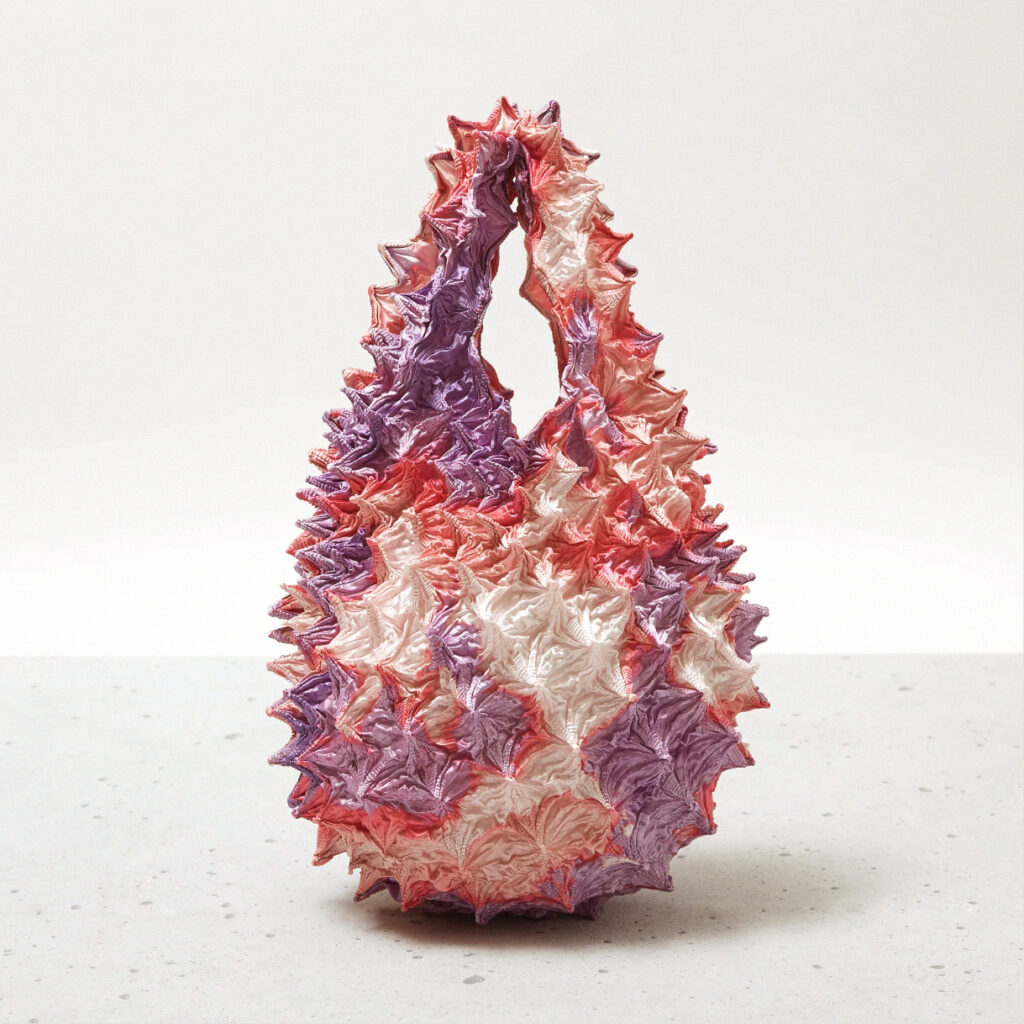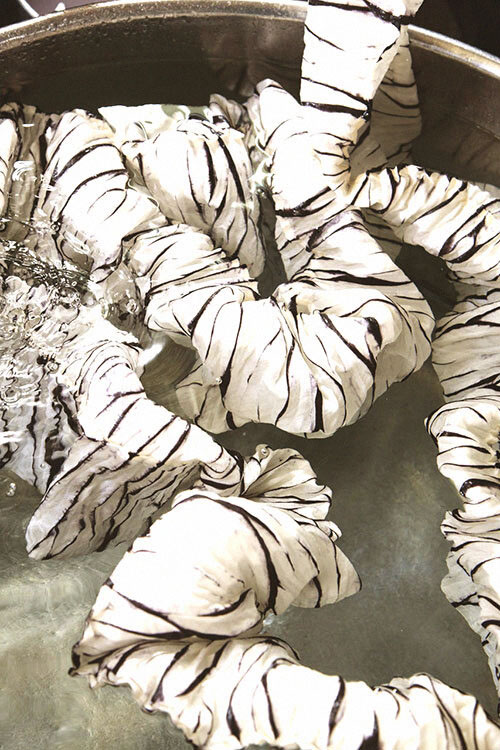
Bunzaburo and the Shape of Heritage
How a Kyoto atelier turns tradition into form and form into future.
by İzlem Arsiya
We crease things to keep them close.
A letter. A fabric. A memory.
The gesture is quiet, but it carries weight. It’s how we preserve, protect, prepare. In the hands of Bunzaburo, a century-old Kyoto atelier, that gesture becomes something else. It becomes form.
Founded in 1915 by Bunzaburo Katayama, the brand began as a kimono textile workshop specializing in shibori, a traditional Japanese dyeing technique that manipulates fabric through pressure, binding, and time. Now led by the third generation of the Katayama family, the studio remains in Kyoto, where legacy and experimentation continue to coexist in quiet dialogue.

What once served the kimono industry has grown into a globally recognized name in craft and fashion. Bunzaburo’s sculptural silk accessories are shown in galleries, sold in boutiques, and worn by those who seek design with memory in its folds. Their pieces speak not in trend, but in texture.
Each object begins as a square of silk. It is hand stitched into a compressed form, tight as a bud and resistant to light. Then it is dyed, steamed, dried, and carefully unbound. The material remembers the tension. It blooms into volume, holding shape without structure, softness without collapse. The pleats do not decorate. They embody process.

Take the Petit Bag, one of Bunzaburo’s most recognizable creations. Flat when folded, spherical when carried. A kinetic object that moves with light, with touch, with time. It’s a design that doesn’t demand attention but lingers in memory.
What makes Bunzaburo’s work striking is not only the technique, but the philosophy. They treat tradition as a material, pliable, stretchable, and alive. Something to be worked, not worshipped. The past becomes something to shape, to move through the hands, to carry forward.
In their process, the tools of heritage such as dye, pressure, and repetition are also tools of evolution. This is not preservation. This is progression through craft.
That approach isn’t unique to Bunzaburo, but it is rare. Across disciplines, a new generation of artists and designers is returning to the past as raw material. Wales Bonner stitches Afro-Atlantic memory into tailored silhouettes. Kengo Kuma reimagines ancient Japanese joinery into structures that feel weightless. El Anatsui binds discarded bottle caps into monumental tapestries, each one shimmering with transformation.

Bunzaburo belongs in that conversation. Their work holds time, not just the time it took to make, but the time it came from. And yet it moves forward. Each piece is a quiet act of reinvention.
In a culture built on speed, their process invites pause. In a world of smoothness, their surfaces ripple. In an industry obsessed with the new, they show us that originality doesn’t always begin ahead. Sometimes, it begins behind, with memory, with repetition, with return.
To wear one of their pieces is to carry more than an object.
It is to carry a rhythm. A process. A history. A future, shaped.


